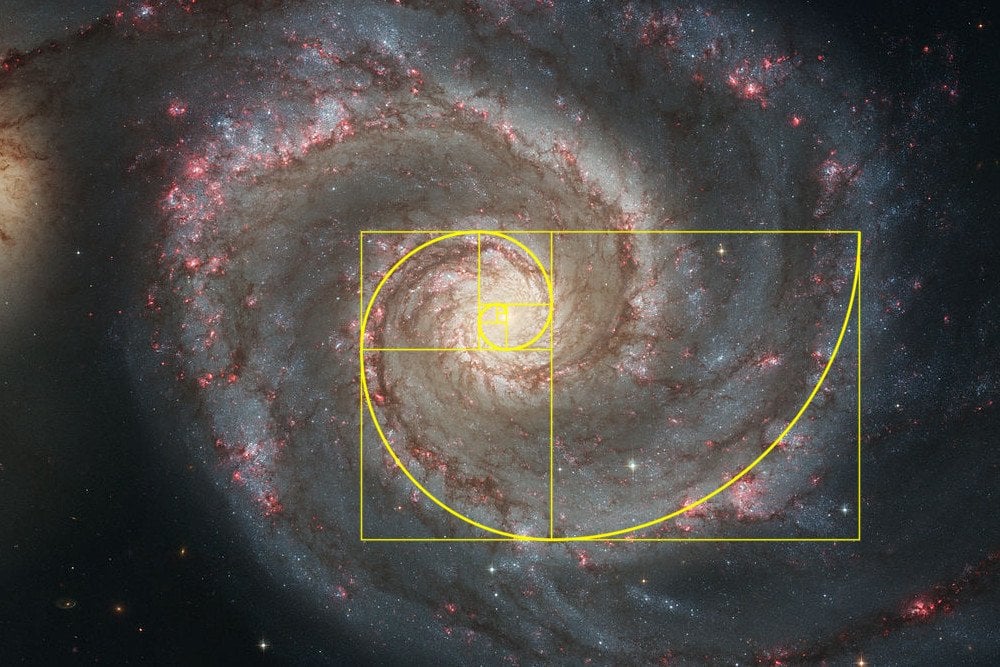The golden ratio, also known as the divine proportion, golden mean, or golden section, is a common mathematical ratio found in nature, describing the symmetrical relationship between two proportions if the ratio of the larger number to the smaller number is the same as the sum of the two numbers to the larger number. This perfect geometry has been observed to occur a lot in nature and can be found in pine cones, flower petals, hurricanes, faces, even solar systems. Throughout the ages, artists, architects, designers, and musicians have tried to incorporate these proportions into their own works.
Around 1200, mathematician Leonardo Fibonacci discovered the unique properties of the Fibonacci sequence. This sequence ties directly into the golden ratio because if you take any two successive Fibonacci numbers, their ratio is very close to the golden ratio. Phi(Φ), a Greek letter, is used to represent the golden ratio which is an irrational mathematical constant having a value of approximately 1.618033. Phi is considered one of the most beautiful numbers in the world and is found in aesthetically pleasing structures in nature and architecture.
Fibonacci numbers frequently appear in the numbers of petals in flowers and the spirals of plants. The positions and proportions of the key dimensions of many animals are based on Phi. Examples include the body sections of ants and other insects, the wing dimensions and location of eye-like spots on moths, the spirals of seashells, and the position of the dorsal fins on porpoises. Even the spirals of human DNA embody phi proportions.

The Great Pyramid of Egypt incorporated phi in the ratios of its base, height, and hypotenuse. Even the Parthenon of the Greeks demonstrates this ratio in the dimensions of its structures. Artists such as Leonardo Da Vinci, Raphael, Sandro, Botticelli, and Georges Seurat used “The Divine Proportion” in a number of their paintings and artworks, such as the Mona Lisa.

Curiously enough, we even find golden ratio relationships in the solar system and universe. The diameters of the Earth and Moon form a triangle whose dimensions are based on the mathematical characteristics of phi. The distances of the planets from the sun correlate surprisingly close to the exponential powers of Phi. The beautiful rings of Saturn are very close in dimension to the golden ratio of the planet’s diameter. NASA released findings in 2003 that the shape of the Universe is a dodecahedron based on Phi.




